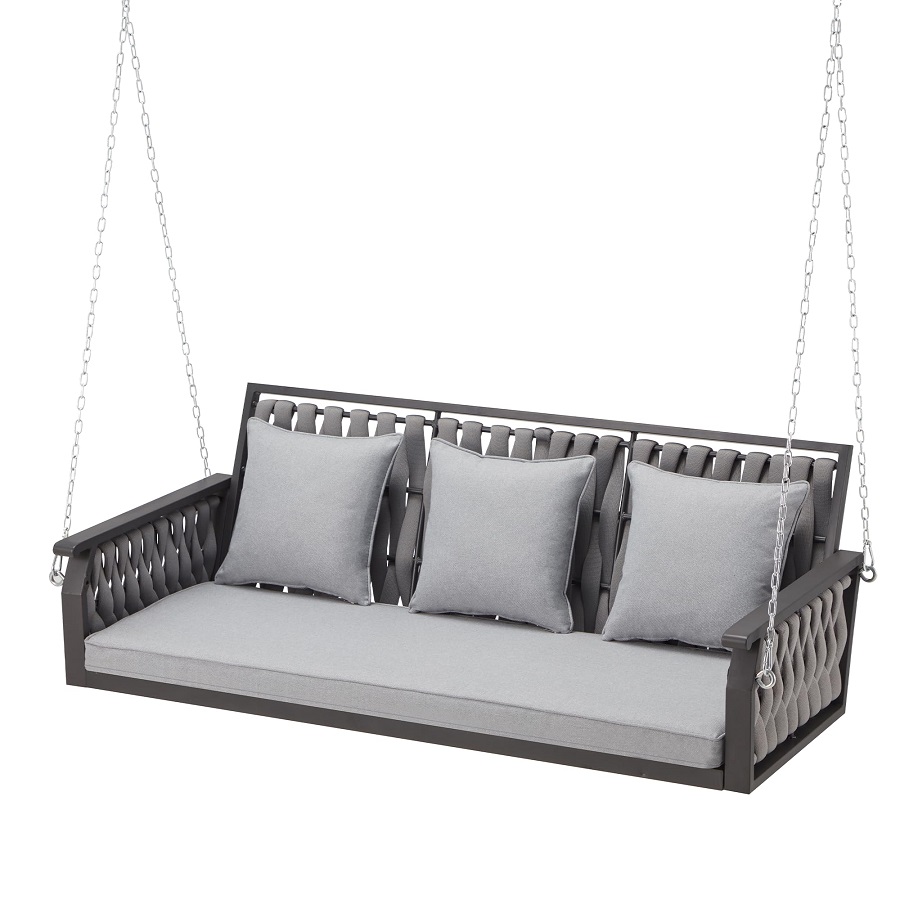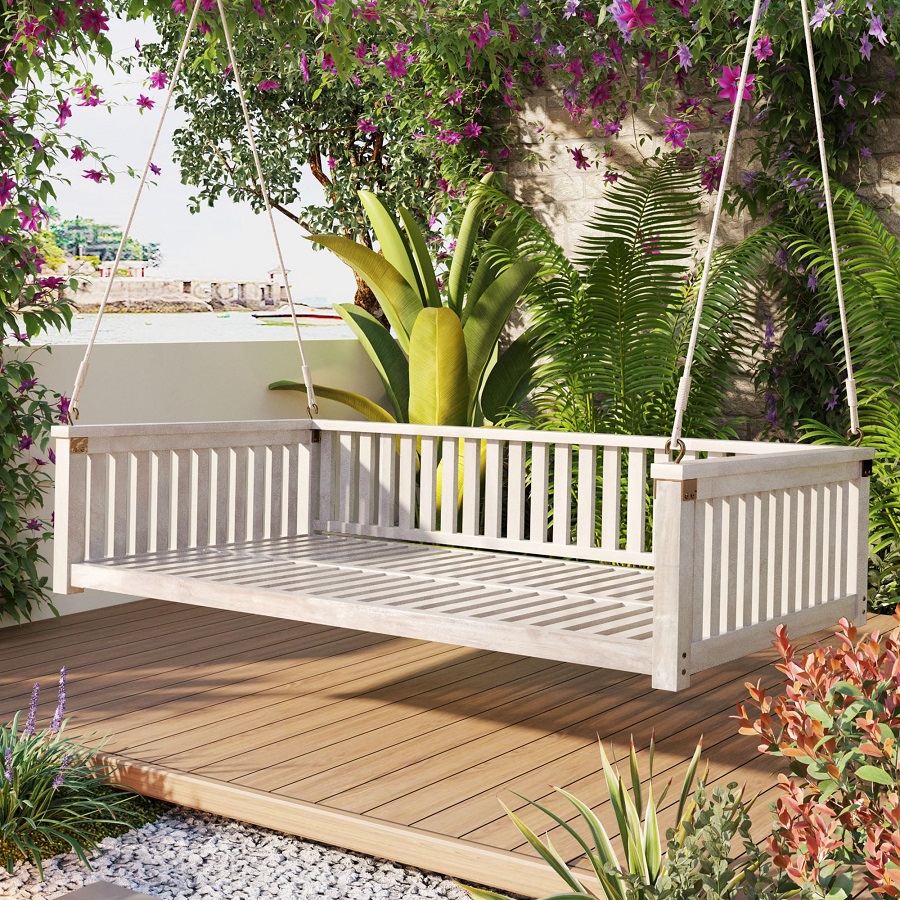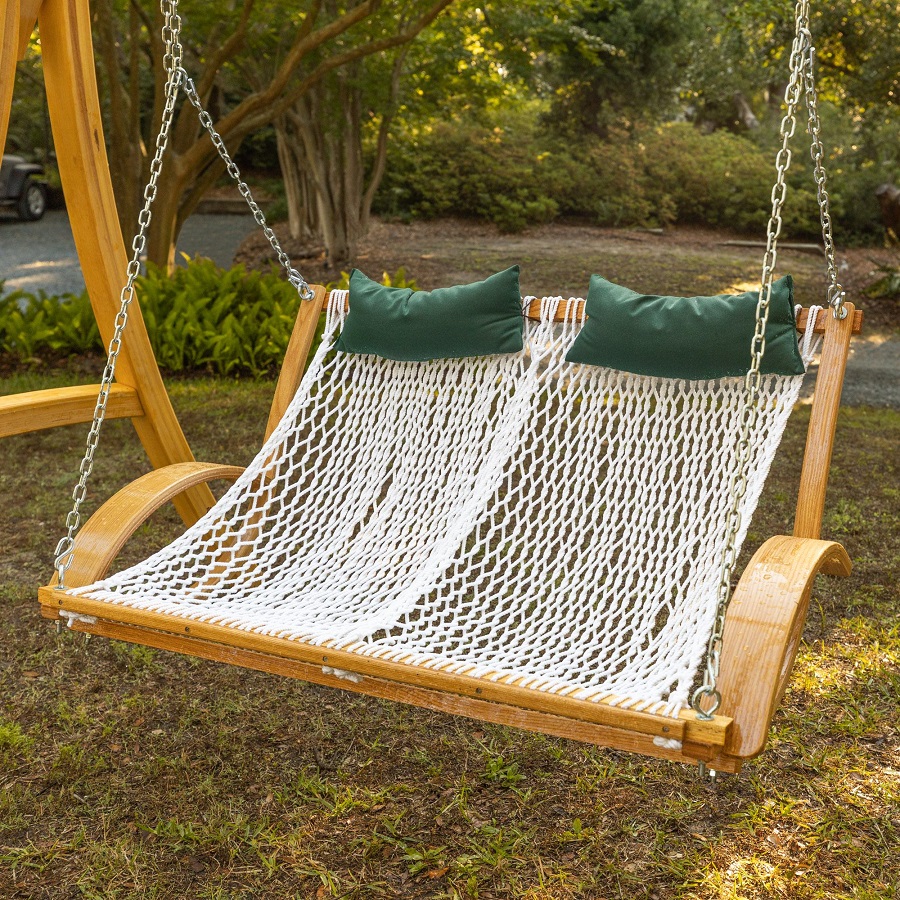Essential Tools and Materials Needed
When figuring out how to hang a porch swing with rope, having the right tools and materials is crucial. To ensure a smooth installation process, gather all essentials beforehand. You’ll need two high-quality ropes, a tape measure, a drill with appropriate bits, eye screws, and a screwdriver. Strong, durable ropes and solid hardware will secure your swing for enjoyable, worry-free use.
Choosing the Right Type of Rope
Rope choice is key for a safe and stylish porch swing. Marine-grade nylon or polyester ropes are top picks for their strength and longevity. Consider Twisted ProManila Rope for a natural look combined with high durability.
Additional Tools for Installation
Beyond the rope and basic tools, you might want additional supplies. A permanent marker helps in marking precise drill spots. Choose a drill bit that matches your eye screws size – typically ?? for most screws. Some opt for a hanger kit, which can eliminate the need for separate eye screws. Prepare all tools before starting for a seamless installation.

Pre-Installation Preparation
Before diving into the actual installation, prepare for a successful project with some groundwork. Pre-installation is vital to ensure your porch swing is safe and secure for years of enjoyment.
Identifying the Right Location
To start, pick the perfect spot for your swing. Choose a location that allows free motion and showcases the swing. Verify that there’s enough room, ideally 18 inches behind and 14-16 inches around the swing’s sides. Height matters too; the swing seat should be 12-20 inches above the porch floor, catering to your comfort.
Assessing and Preparing Ceiling Joists
Ceiling joists are the backbone of your swing’s support system. Find a strong wood joist that’s free of deterioration and knots. If joists aren’t visible, you may need to remove some paneling. Use the tape measure to ensure it can support your swing and guests safely. Once located, clean the area around the joist and prepare your tools for the next steps.
Step-by-Step Installation Process
Ensuring your porch swing is both secure and attractive requires following a careful installation process. Here, we outline the necessary steps to hang your porch swing with rope, ensuring safety and style go hand in hand.
Measuring and Marking Rope Placement
First, with your tape measure in hand, decide on the position of your swing. Measure the distance from one rope hole to the other. Then add two to four inches on each side. This ensures even weight distribution and prevents the ropes from rubbing against the swing. Use your permanent marker to mark these spots precisely on the ceiling joists.
Drilling Pilot Holes
Next, take your drill equipped with a drill bit and create pilot holes on the marked spots in your ceiling joist. Make sure the holes are deep enough for your eye screws to hold firmly. This step is crucial for a stable swing setup.
Installing Eye Screws
After drilling the pilot holes, it’s time to secure the eye screws. Start by hand to ensure proper positioning, then use your screwdriver to tighten them as much as possible. This will provide a reliable anchor point for your porch swing’s ropes.
Attaching the Rope and Swing
Attaching the rope to your porch swing is a critical step. Follow these instructions to ensure a secure and proper attachment.
Securing the Rope
First, thread the two ropes through the holes on each side of the swing. Make sure the ropes are even. Pull each rope up to the eye screws in the ceiling. Tie off the rope on the swing side temporarily with a simple overhand knot. Leave enough slack to adjust after tying to the ceiling.
To connect the rope to the eye screws, create a strong loop in the end of each rope. Secure this loop using a knot that will handle weight, such as a bowline knot. A bowline knot holds securely under load, making it ideal for porch swings.
Knots to Use for Swing Attachment
The knots you choose are crucial to the safety and stability of your porch swing. The two most reliable knots are the bowline and the double bowline.
Bowline Knot: Form a small loop in the rope’s end, then pass the end through the loop around the standing part and back down through the loop. Tighten firmly.
Double Bowline Knot: A stronger variant involves making two loops before passing the rope end through, ensuring even more stability.
After knotting, pull each rope tight to check it will not slip. Trim excess rope and melt the ends with a lighter to prevent fraying for a clean finish. With secure knots, your porch swing is now safely attached and ready to use.

Safety Tips and Precautions
When hanging a porch swing with rope, safety is paramount. Taking the time to follow a few essential precautions can prevent accidents and ensure a secure setup.
Ensuring Stable and Safe Installation
Always pick a sturdy ceiling joist free from damage for support. Make sure your drill, screws, and knots are suitable for the weight. Proper spacing of ropes on the swing and joists aids in balance and safety. Before the first use and regularly after, test the swing’s stability. Ask an adult to sit on it to check the load.
To confirm safety, pull on the ropes and swing gently. Watch for loose screws, weak knots, and any give in the joist. If anything moves, tightens, or adjust immediately. Make sure knots are tied correctly and the rope isn’t fraying. A bowline knot is best for its strength under tension.
Don’t forget to heed the manufacturer’s recommendations regarding weight limits. Exceeding them can risk the swing’s integrity and safety. Keep tools and small parts away from children and pets during installation to avoid hazards.
Maintenance Tips for Longevity
Your porch swing will last longer with regular maintenance. Check knots and ropes for wear, and replace if needed. Tighten any screws that may have loosened over time. Keep a weather eye on the rope’s condition, and if you spot fraying or weakness, replace the rope. Lubricate any moving metal parts to prevent rust and ensure smooth movement. Regularly inspect your swing, especially before large gatherings or after extreme weather. For peace of mind, consider scheduling a professional inspection annually.
By keeping safety at the forefront, you ensure years of enjoyment from your porch swing with minimal risk.
Alternatives and Enhancements
While the traditional method of hanging a porch swing with rope is popular, exploring alternatives and enhancements can add convenience and flair to your installation.
Using a Hanger Kit
If you prefer a straightforward and quicker installation, consider using a hanger kit. Hanger kits often come with all necessary hardware, simplifying the process. They eliminate the need for separate eye screws. This option is ideal for those who seek ease and efficiency. Ensure the kit’s components can support the swing’s weight and the expected load.
Decorating Ideas for Porch Swings
Once your porch swing is securely installed, adding personal touches can enhance its appeal. Cushions or pillows provide comfort and style. Choose weather-resistant fabrics for durability. Hanging plants or strings of lights can create a cozy atmosphere. For a festive look, drape garlands or ribbons based on the season. These decorations not only make your swing inviting but also reflect your personal style.

Future Care and Maintenance
Proper future care and maintenance are pivotal for extending the lifespan of your porch swing installed with rope. Consistent care ensures the swing remains safe, sturdy, and visually appealing.
Regular Checks and Adjustments
Regularly inspect your porch swing to keep it in top condition. It’s advisable to check all knots and ropes every few months for any signs of wear or fraying. If you notice any deteriorating ropes, replace them promptly to stave off accidents. Additionally, tighten any loose eye screws and review the stability of the ceiling joist. After harsh weather, perform an immediate check to confirm the swing and its component’s integrity. Safety should always take precedence; therefore, carry out these routine checks diligently.
